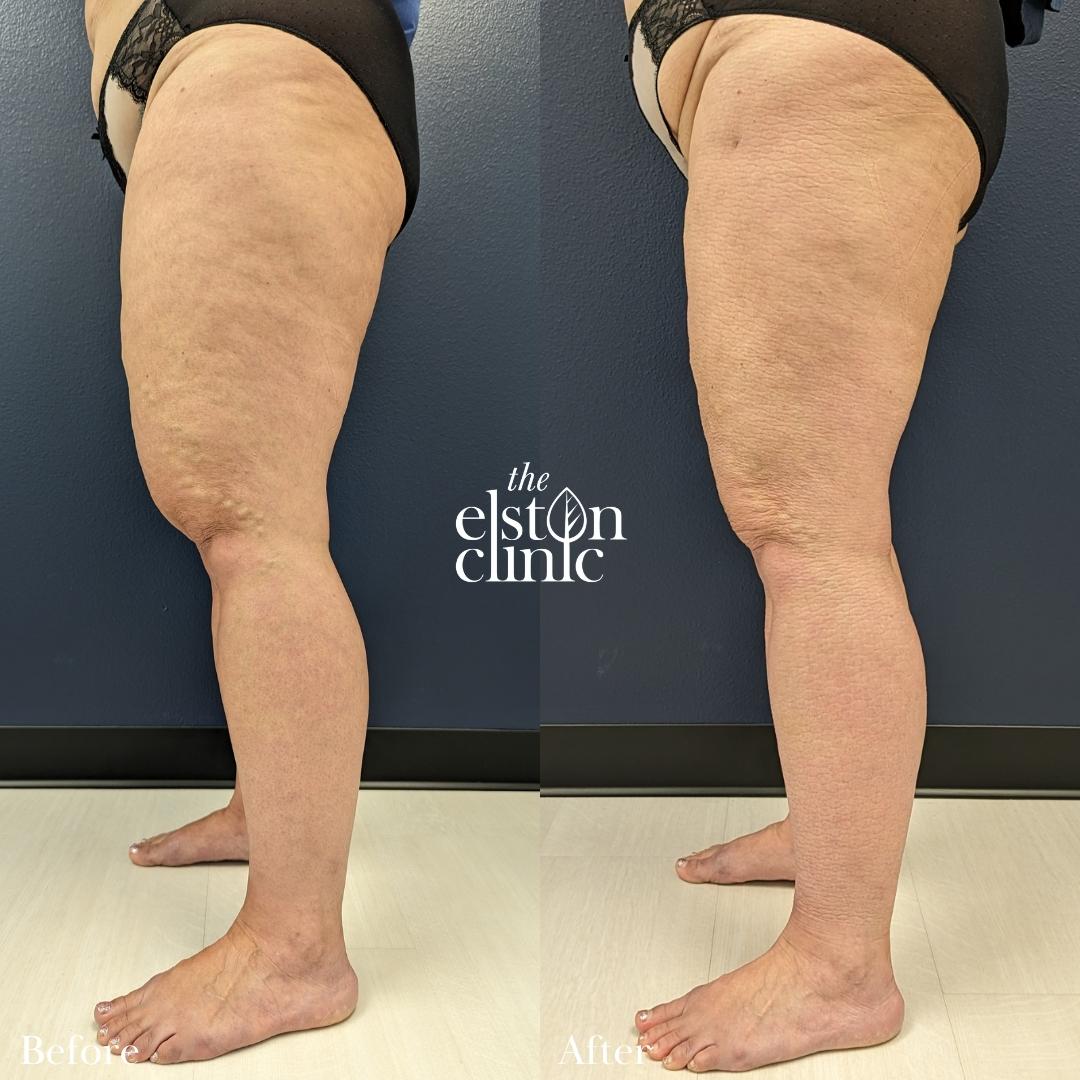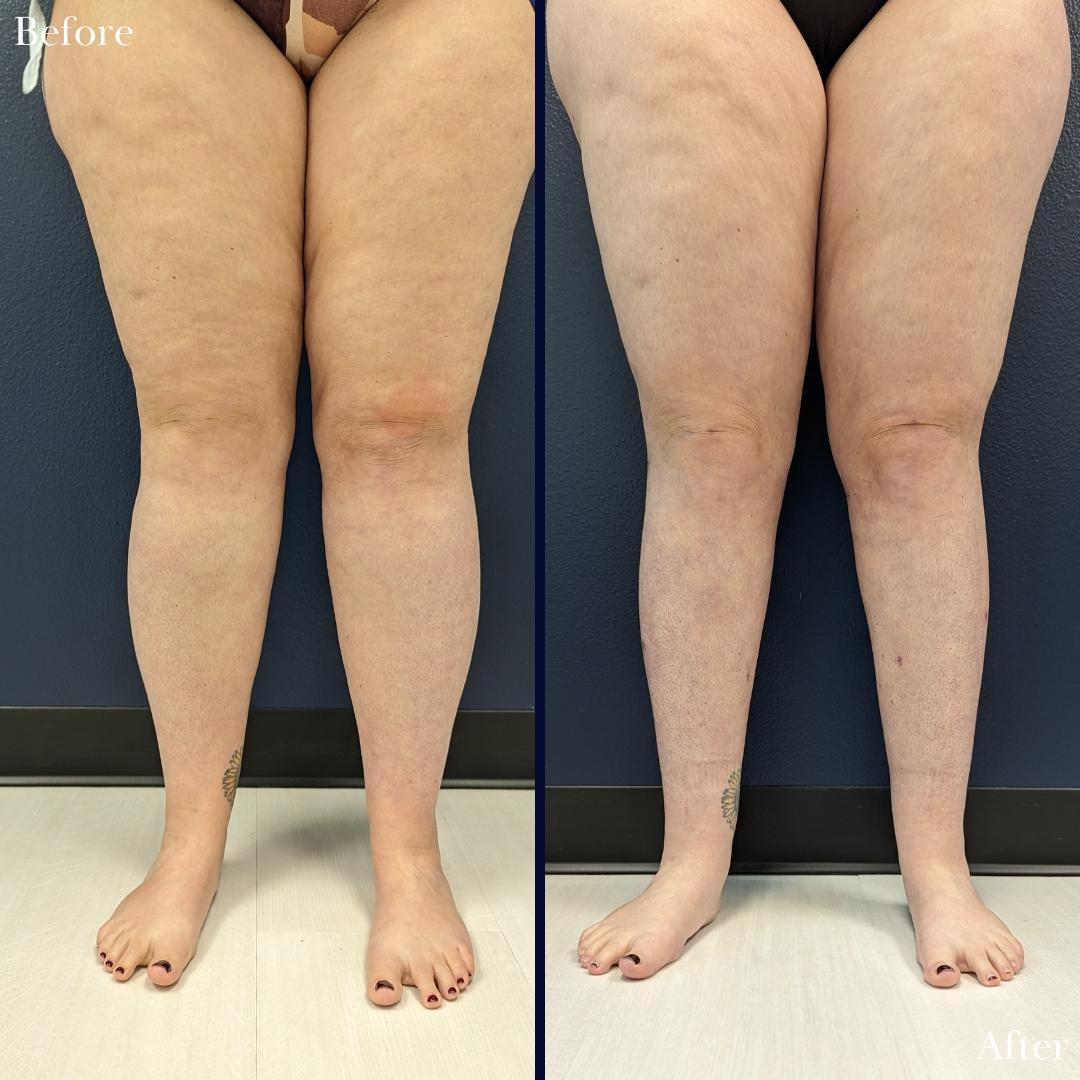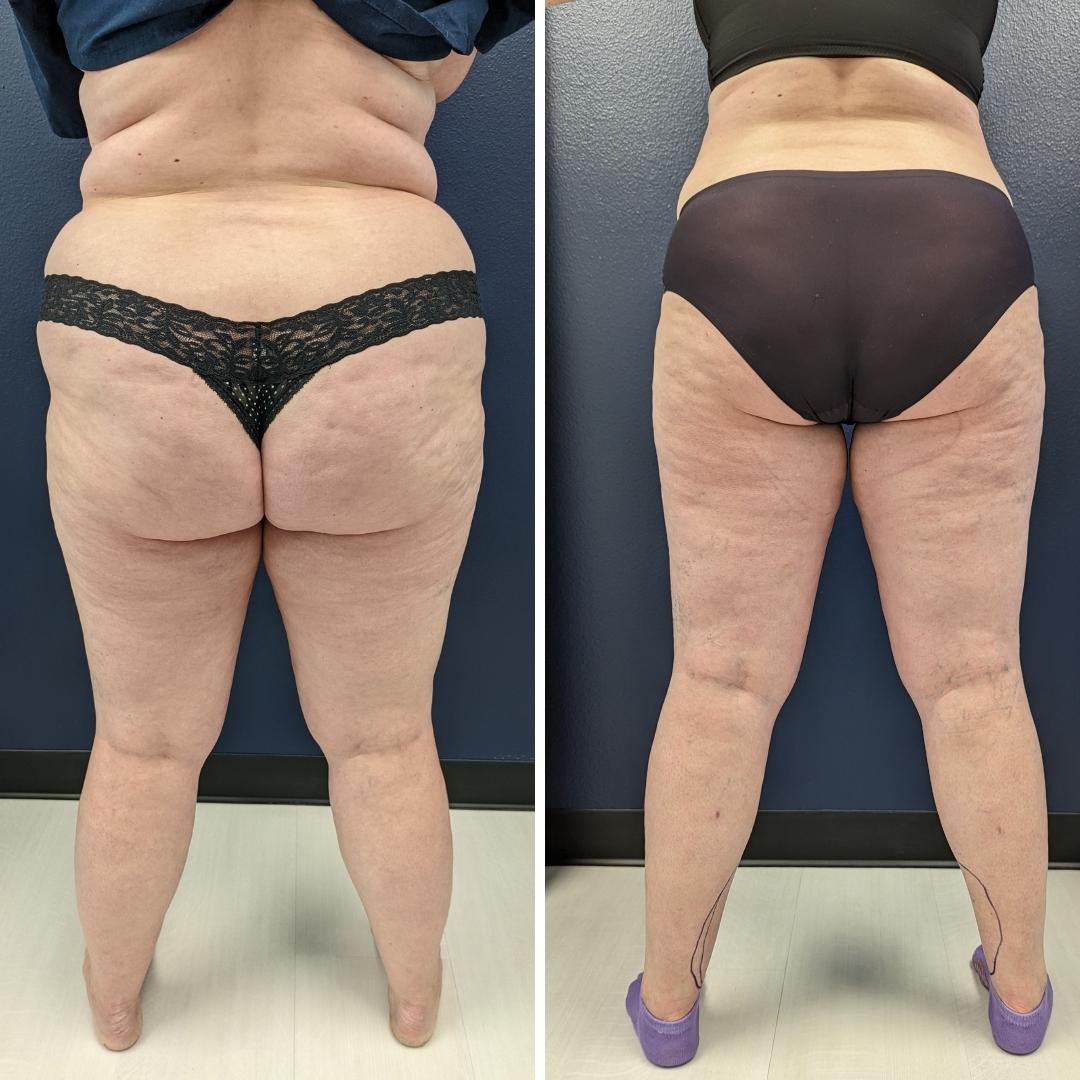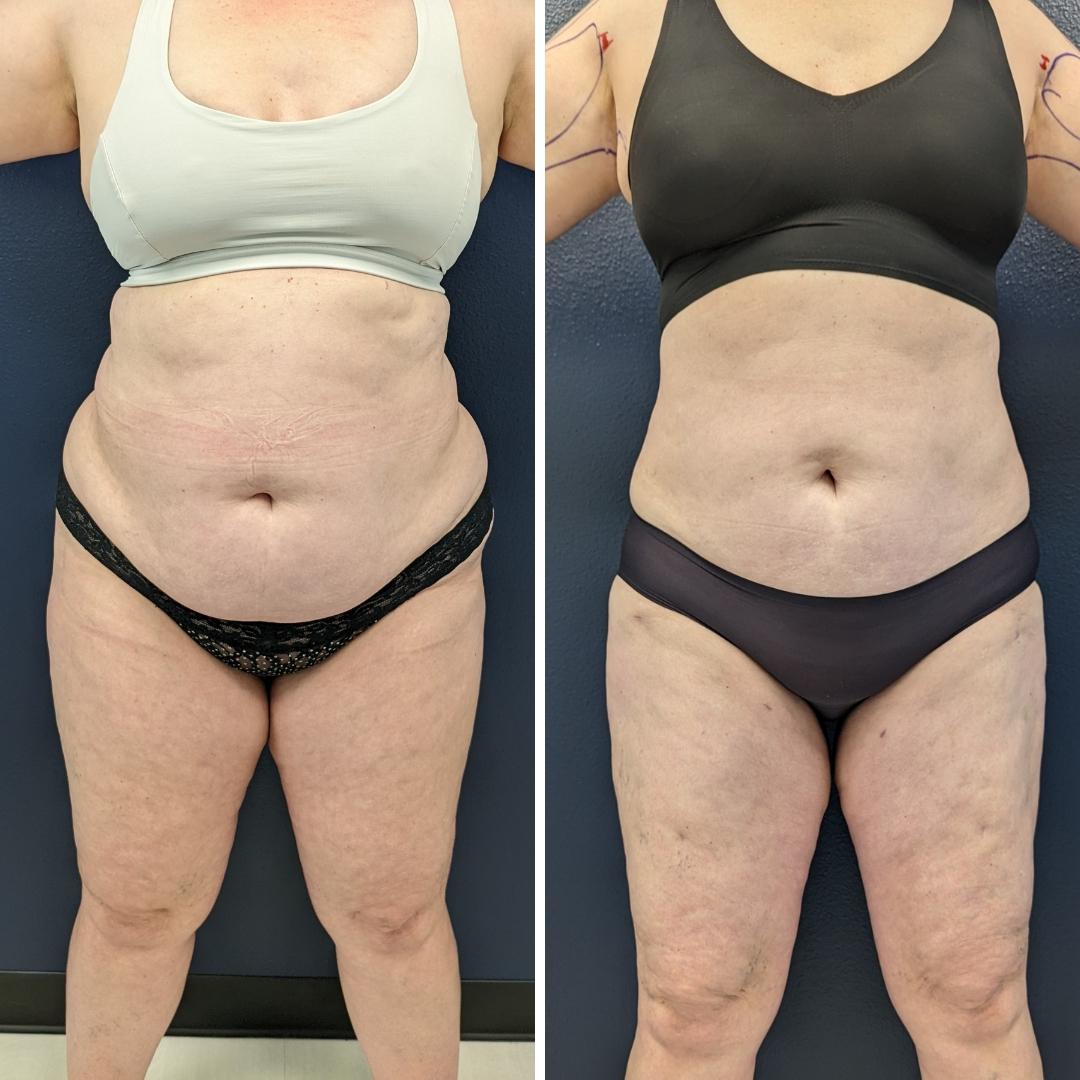Case Studies
Lipedema is a painful condition that causes excess accumulation of fat in the hips, thighs, legs, and arms, causing millions of people around the world, predominantly women, to feel uncomfortable in their own skin.





Lipedema is a painful condition that causes excess accumulation of fat in the hips, thighs, legs, and arms, causing millions of people around the world, predominantly women, to feel uncomfortable in their own skin.





Lipedema is diagnosed clinically using a few exam findings that differentiate it from lymphedema. They are often confused, but easily distinguished. Patients with lipedema have symmetrical swollen and trunk-like legs, hips, and/or arm. The affected areas demonstrate bruising from mild trauma, fat that is not responsive to diet and exercise, and often pain and heaviness of the affected areas. Some patients will describe pulling from the areas of pendulous fat on their kneecaps or thighs that cause discomfort and can be confused with orthopedic causes of knee or hip pain.
The average overweight person still doesn’t have cankles. The abnormal accumulation of fatty tissue in the lower legs is usually related to lipedema and responds well to liposuction.
Some surgeons who treat lipedema advertise “lymphatic-sparing liposuction” as a technique that avoids damaging the delicate lymphatic vessels in the extremities. The idea behind the technique is to use the liposuction machine in a direction oriented parallel to the lymphatics, rather than perpendicular so you avoid tearing or damaging the vessels. The experience of our clinic does not support this type of technique and believes it to be a false promise. Dr. Elston has performed numerous lymphatic microsurgeries and can attest that the notion that you can avoid tiny lymphatics by orienting the cannula in a particular direction is not possible. We are happy to further discuss the issue in your consultation, but we perform liposuction for lipedema the same as we would for traditional liposuction. No gimmicks, just results.
Patients often ask during their consultation which area they should liposuction first when they have lipedema.
Many areas can feel heavy, painful, or be prone to bruising. I always recommend the patient choose the most bothersome area to treat first so that they get the biggest benefit earlier on. Often, the relieved symptoms can help make someone's quality of life significantly better throughout the rest of their surgical journey.
If you sort out the most painful area, you might have 12-18 months throughout the rest of your surgical journey where you have the maximum benefit.
I also find that some patients don't know which areas bother them because one area is so top of the mind they can't focus on the others. By treating the worst area it allows you to more objectively assess which other areas are causing trouble.
Compression garments can help with swelling before surgery. This cuts down on the amount of fluid removed so that a higher fraction of fat can be removed with your lipedema liposuction treatment.
More fat = more symptom resolution for most patients.
While this can be helpful for areas like the thighs and buttocks, lower volume areas like the arms and lower legs may not be necessary to have swelling optimized.
Your board-certified plastic surgeon can help direct you on proper preoperative care to make sure you have success with your lipedema journey!
The best evidence suggests that liposuction results and reduction in symptoms can last up to 12 years after the last procedure. Some patients require less compression garments and manual lymphatic drainage sessions afterward.
Liposuction for lipedema can safely be performed awake in many patients that are otherwise healthy. We can remove up to 5L in a single session while keeping the patient very comfortable without an IV or a breathing tube.
Many patients prefer this option because they don't have to experience nausea, brain fog, and have more control over their body throughout the process.
We perform greater than 95% of our surgeries awake with minimal sedation in our accredited facility and think that if you're not sure about whether it's right for you, just ask and let us tell you about the possible benefits.
Recovery can vary from person to person, but it's important to remember that despite being awake for most of our patient's procedures, we perform the same technique as if you were asleep.
That means even though you won't have nausea and vomiting from the anesthesia, the surgery sites will be as uncomfortable and there will be swelling and tenderness that limit your mobility.
Understanding the recovery process is just that - a process - is critical to successful lipedema treatment.
Worried about what supplies you will need after your surgery? Don't worry - we take care of all of that. We provide all of the supplies you will need after surgery including scar gel, Arnica tablets for bruising, underpads for drainage after liposuction, and bandages. These are included in the pricing that you will be given during your consultation.
For those who aren't having surgery with us, you can still find our list of supplies we recommend that can be purchased at Amazon below.
Lipedema is diagnosed clinically using a few exam findings that differentiate it from lymphedema. They are often confused, but easily distinguished. Patients with lipedema have symmetrical swollen and trunk-like legs, hips, and/or arm. The affected areas demonstrate bruising from mild trauma, fat that is not responsive to diet and exercise, and often pain and heaviness of the affected areas. Some patients will describe pulling from the areas of pendulous fat on their kneecaps or thighs that cause discomfort and can be confused with orthopedic causes of knee or hip pain.